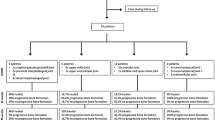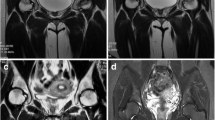Abstract.
Presently, extracorporeal shock-wave therapy (ESWT) is not yet a standard therapeutic technique in orthopaedics. The mechanism for the analgesic effect or the effect of shock waves on osseous defects are still unknown. With the help of a review of the literature, indications and success rates for ESWT in the treatment of non-unions are outlined, while adequate impulse and energy rates are defined according to the present state of knowledge. Non-union is defined as an absent healing process after a duration of 6 months. The aim of this study is to rate the published data. A total of 52 papers referring to ESWT of the locomotor system are reviewed, with a focus on the 635 patients from 10 publications who underwent ESWT to treat non-unions. Validation was performed for each paper dealing with this topic according to the internationally accepted system of the American Association of Spine Surgery as types A-E. Conclusions regarding possible applications in therapy were taken only from high-quality publications of types A and B. This advice can be regarded as scientifically as well as economically sound. The investigations concerning non-union hardly live up to scientific standards. No serious complications were observed. Because of the complication rate in operative treatment of non-unions, ESWT seems to be justifiable. The techniques of ESWT, energy density levels and impulse rates will be described. Atrophic non-unions seem to represent a poorer starting point in comparison with hypertrophic non-unions. Most investigations showed a consolidation of the non-union during a period of 3 months following ESWT, so that in case of treatment failure, operative treatment in the form of a re-osteosynthesis would only be delayed for this period of time. The advantages of ESWT are its non-invasiveness and low rate of complications. The primary aim of further research should be the evaluation of adequate energy density levels and impulse rates for various indications in accordance with evidence-based medicine. Long-term results need to become available before ESWT can be compared with established methods.
Similar content being viewed by others
Author information
Authors and Affiliations
Additional information
Electronic Publication
Rights and permissions
About this article
Cite this article
Birnbaum, .K., Wirtz, .D., Siebert, .C. et al. Use of extracorporeal shock-wave therapy (ESWT) in the treatment of non-unions. Arch Orthop Trauma Surg 122, 324–330 (2002). https://doi.org/10.1007/s00402-001-0365-4
Received:
Issue Date:
DOI: https://doi.org/10.1007/s00402-001-0365-4




